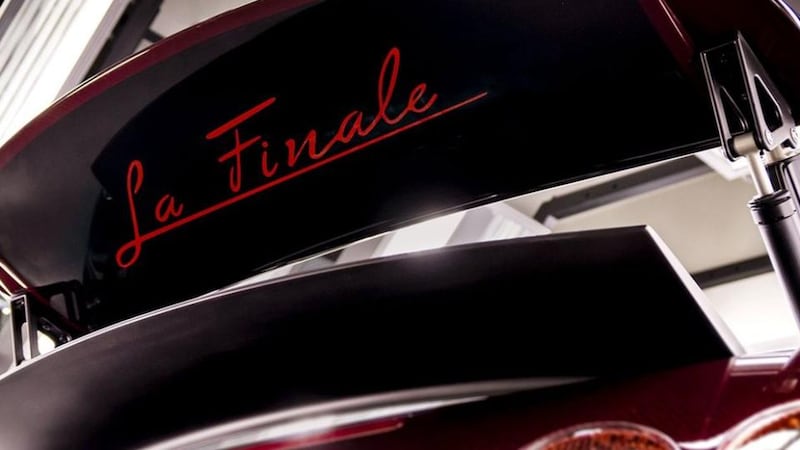Bugatti sold its first Veyron 16.4 in 2005, back when Taoiseach Bertie Ahern was topping the opinion polls and assuring us in interviews that "Fianna Fail will never take risks with the economy". It was a time when you could speculate that someone in Ireland might stick an 06 D numberplate on a multi-million euro supercar and not get laughed off the forecourt.
With an astonishing top speed, even limited to 407km/h when it launched, the Bugatti Veyron was the hottest motoring property on the market.
This week Bugatti sold the last of its 450 Veyron variants, a 16.4 Grand Sport Vitesse La Finale roadster.

The 1,888kg carbon-fibre monster will end production with 300 coupes on the road and 150 roadsters, leaving Bugatti as a brand without a saleable car.
In a final fling, the La Finale will be shown at the Geneva Motor Show on March 3rd to close the Veyron story where it began, though its 883kW peak power has grown by 147kW since the car’s launch. It also had an astonishing 1500Nm of torque.
Bugatti is not saying how much its Middle Eastern buyer paid for Chassis Number 450, but most recent Veyron Roadsters have averaged a purchase price of around €2.3 million.
The 8.0-litre, W16 mid-mounted motor used four turbochargers, though the narrow vee angles (it was, effectively, two W8 engines stuck together) meant it only used four camshafts.
Even with its introductory power output, the car still managed to smash beyond 100km/h in 2.5 seconds, beyond 200km/h in seven seconds and past 300km/h in 15 seconds. It kept going (after you’d stopped and inserted its go-nuts key to reduce drag) a top speed limited to 407km/h - a number less arbitrary than most knew.
Volkswagen Group board member and the Veyron's engineering boss, Dr Wolfgang Schreiber, declared it was limited to 407km/h because the fastest time ever recorded on Mulsanne Straight at Le Mans was a WM Peugeot at 405km/h - and Volkswagen Group boss Dr Ferdinand Piech, who designed the Porsche 917, like beating it in a road car.
Unlimited, the 883kW Veyron Super Sport broke (and still holds) the production car speed record at 431.072km/h, though it pulled 434km/h on the fastest of the two averaged official runs - and all with a two-year Volkswagen Group warranty.
Still, Veyron owners have a different outlook on acceptable running costs than Polo owners. While it eventually moved out to 10,000km, Veyron owners were initially required to change their custom-made Michelins every 5000km, whether there was tread left or not. This was because of the stresses on the belts at vMax, and cost $25,000 a set.
What made that even worse was that the only equipment capable of the precise matching of the tyres to the wheels that guaranteed 400km/h-plus stability was only to be found in France, so Veyrons had to be shipped there to have their new boots fitted. At $70,000 a time.
And, every third time that happened (again, for presumed stress reasons), they had to spend another $50,000 to change all four alloy rims.
The all-wheel drive Veyron used a seven-speed, dual-clutch transmission, built and partly engineered by British racing specialist Ricardo (which builds McLaren’s twin-turbo V8 motors). A replacement transmission cost around $120,000, or twice what the most expensive Volkswagen-branded car cost at the time.
“In the Veyron, Bugatti has created an automobile icon and established itself as the world’s most exclusive supercar brand,” Bugatti Automobiles President, Wolfgang Dürheimer said.
“So far no other carmaker has managed to successfully market a product that stands for unique top-class technical performance and pure luxury in a comparable price/volume range.
“An unprecedented chapter in automobile history has reached its climax.”











